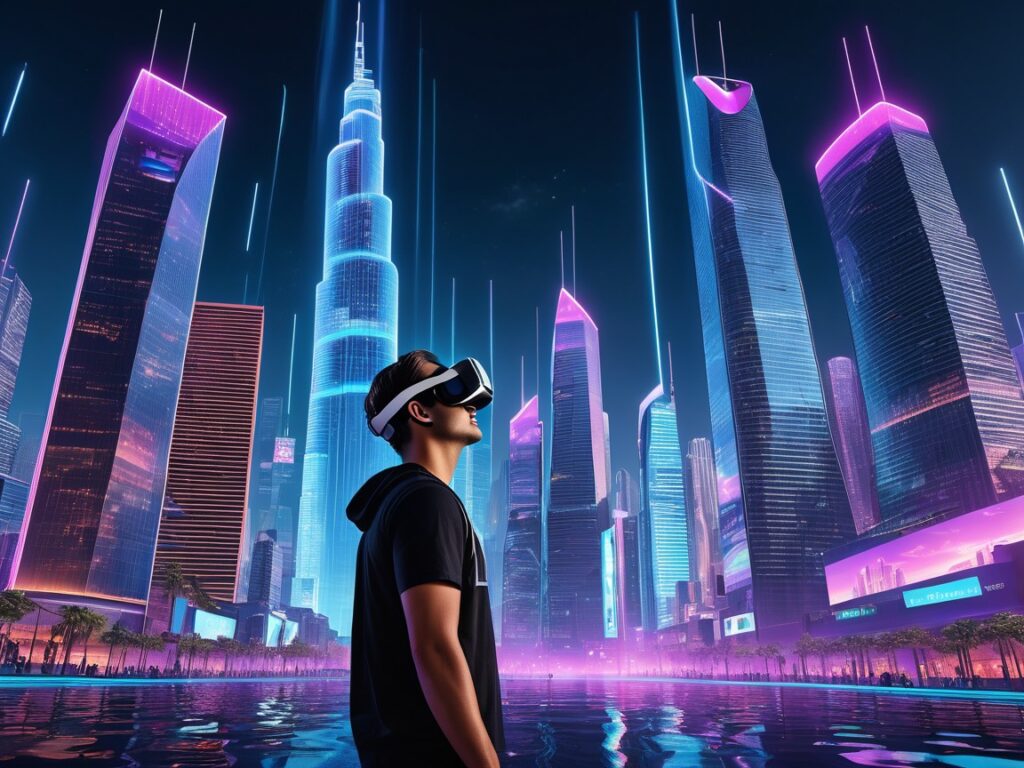The Economy of Make-Believe: How Fantasy Became More Profitable Than Reality

Welcome to the Illusion Economy
Reality is overrated. In a world where facts are negotiable, where fiction holds more value than the truth, and where digital fantasies generate billions, we must ask—has make-believe become the ultimate business model?
Think about it:
A metaverse sneaker can sell for more than a real one—like Nike’s virtual kicks on RTFKT, which fetched up to $134,000, proving that digital scarcity can outprice physical reality.
Taylor Swift’s Eras Tour, a hyper-stylized, memory-laden spectacle, is projected to generate $2 billion+ in ticket sales—more than the GDP of some nations.
Gamers spend over $60 billion a year on virtual items that don’t physically exist. Even your favorite influencer? Probably AI-generated.
In this age of hyper-curated perception, fantasy has transcended entertainment—it’s an economy.
The Business of the Unreal
In a world where facts are debated, but fantasy is gospel, reality is struggling to keep up. We are living in the age of make-believe—a time where virtual influencers sign brand deals, digital sneakers outsell their physical counterparts, and fictional universes drive billion-dollar industries.
The lines between what is real and what is imagined have been permanently blurred. And it’s not just entertainment—this is a full-scale economic shift. Fantasy has become more profitable than reality.
From Metaverse real estate to AI-generated celebrities, the most successful businesses today aren’t selling products. They’re selling alternative realities.
A Billion-Dollar Illusion
The global entertainment and media industry hit $2.9 trillion in 2023, and a large chunk of this growth comes from world-building rather than reality-telling. Consider this:
• Disney made $2.2 billion from theme parks in Q4 2023 alone—not from movies, but from giving people a chance to step inside a fantasy.
• The gaming industry now generates more revenue than the music and film industries combined, exceeding $250 billion in 2023.
• In 2023, Nike made $185 million selling virtual sneakers in the metaverse—shoes that don’t exist in the physical world.
What do these numbers tell us? The economy is increasingly detaching from reality. Fantasy has better ROI than facts.
But why? What is driving this shift?

Why Fantasy Sells More Than Reality
At its core, the rise of make-believe is powered by psychology, technology, and culture.
Psychology: People Crave Escapism
• The real world is unpredictable. War, inflation, and economic instability make reality stressful. Fantasy offers an alternative—a controlled, immersive escape.
• A study by the American Psychological Association found that people experiencing stress are 3x more likely to engage in fantasy-driven content—whether it’s gaming, fan fiction, or metaverse experiences.
Technology: The Tools of Illusion Are Stronger Than Ever
• AI is creating hyper-realistic avatars that outperform real influencers.
• Deepfake tech allows for CGI influencers to model for brands without ever aging, getting tired, or demanding a paycheck.
• The metaverse, AR, and VR are making digital ownership more desirable than physical ownership.
Culture: The Rise of Fandom Economies
• Entire communities now live inside fictional worlds.
• The Barbie movie grossed $1.4 billion not because it was just a film, but because it tapped into nostalgia, social identity, and hyper-stylized reality.
• Anime conventions, Marvel fandoms, K-pop fanbases—people don’t just consume content, they participate in it, creating self-sustaining economies around fictional universes.
Put simply: Fantasy gives people a sense of control, identity, and belonging—things that reality struggles to provide.
Who’s Profiting from Make-Believe?
This isn’t just about entertainment anymore. Entire industries are shifting toward monetizing illusion.
Fashion: Virtual Clothing is the New Luxury
• Balenciaga and Gucci have launched digital collections that people buy and wear in the metaverse.
• Fortnite sold $1 billion worth of in-game outfits (skins) in a single year—for characters that don’t exist.
Influencer Economy: AI-Generated Celebrities
• Lil Miquela, a virtual influencer, earns over $10 million a year from brand deals without ever existing.
• South Korea’s AI pop star, Eternity, has a fanbase larger than some real K-pop bands.
Sports: Fantasy leagues are outpacing real leagues
• FIFA Ultimate Team made over $1.6 billion in 2023—more than some actual football leagues.
• NBA Top Shot turned virtual basketball moments into an NFT economy worth millions.
In every space, the most profitable models are no longer based on reality. They are based on storytelling, illusion, and digital ownership.
Is Reality Becoming Obsolete?
The deeper we go into make-believe economies, the more important the question becomes: What happens when reality is no longer profitable?
• If AI-generated influencers outperform humans, what happens to real creators?
• If metaverse clothing becomes more valuable than physical fashion, do real designers lose relevance?
• If AI-generated music tops the charts, what happens to real artists?
We are at an inflection point. The world is being rewritten, not by facts, but by fantasy. And those who master the business of illusion will be the ones shaping the future.
Reality isn’t going anywhere. But it is being redefined—and the most powerful brands today are those that understand how to sell the unreal as real. Because in the economy of make-believe, perception is the new profit.